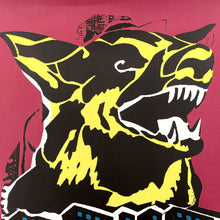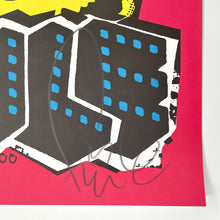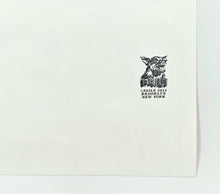
Dimensions: 28 x 22 inches / 71 x 56 cm
Medium: Offset giclee print on fine art matte paper. Each signed and stamped with a special FAILE Dog studio stamp.
Provenance: Hand-signed by artists. FAILE Dog studio stamp on reverse. Comes with gallery Certificate of Authenticity.
Edition: Limited Edition
Year: 2015
Condition: Very Good (slight knock on upper edge)
ARTIST BIO
FAILE (Pronounced "fail") is a Brooklyn-based artistic collaboration between Patrick McNeil (b. 1975, Edmonton, CA) and Patrick Miller (b. 1976, Minneapolis, MN). Since its inception in 1999, FAILE is known for their pioneering use of wheatpasting and stenciling in the increasingly established arena of street art, and for their explorations of duality through a fragmented style of appropriation and collage. During this time, FAILE adapted its signature mass culture-driven iconography to a wide array of media, from wooden boxes and window pallets to more traditional canvas, prints, sculptures, stencils, multimedia installation, and prayer wheels. While FAILE's work is constructed from found visual imagery, and blurs the line between “high” and “low” culture, recent exhibitions demonstrate an emphasis on audience participation, a critique of consumerism, and the incorporation of religious media and architecture into their work.














